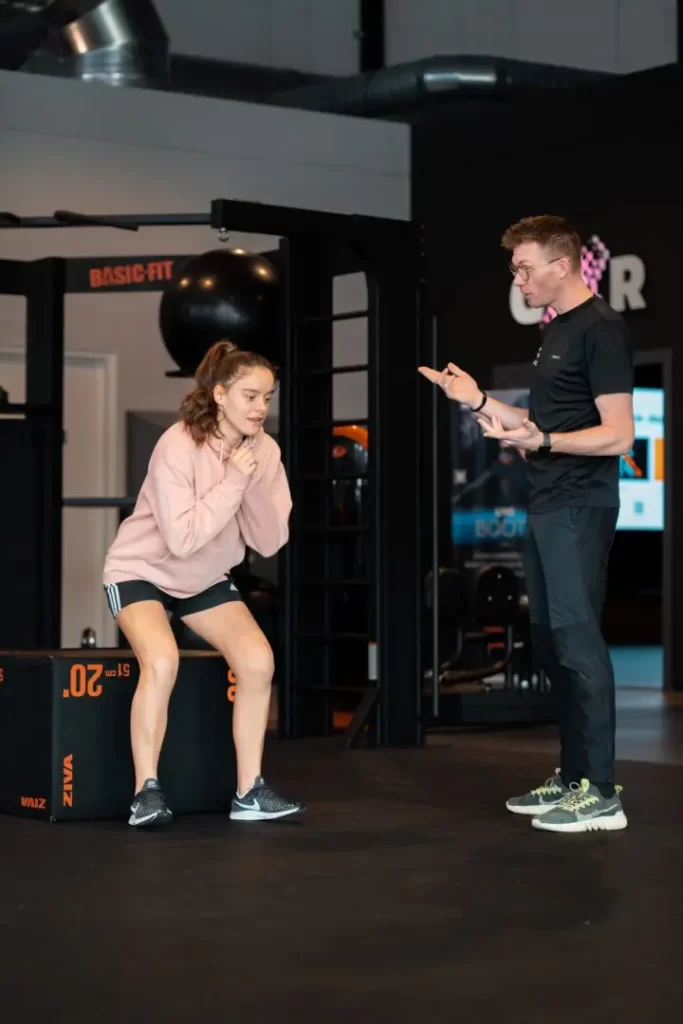The popliteus
As you may have learned in previous blogs, the knee region consists of several structures. These are both passive structures (ligaments, meniscus, bone) and active structures (muscles). Several large muscles provide ability to move in the knee. We are probably all familiar with these too.
- At the front, the quadriceps take care of stretching the knee.
- At the back, the hamstrings take care of bending and rotating the knee.
Deeper to the back of the knee we find another muscle; the popliteus. This muscle runs from the back/outside of the knee inwards (see image). On the outside, the muscle attaches to what we call the lateral epicondyle of the femur. This is the most protruding bone point on the outside of the knee. The popliteus also has fibres in this region that 'fuse' with the lateral knee ligament and lateral meniscus. It is a muscle that runs relatively horizontally and then diagonally. So not mainly straight down as the quadriceps do. The popliteus further attaches to the back on the medial side (inside) of the tibia (tibia).

Function
Due to the course of this muscle, it has an important function in rotating the knee inwards when it is stretched. It is also a muscle that is active when bending the knee and has an important supporting role for the posterior cruciate ligament. Together, they ensure that the knee has sufficient stability to prevent the lower leg from shifting backwards relative to the upper leg. Because the muscle has a function in turning the knee inwards, it also provides extra stability when the leg turns outwards. This is because the popliteus then also inhibits this movement.
Complaints
Complaints to this muscle can occur in different ways. This can be either acute (as in a trauma) or gradual. In complaints that develop gradually, there is little chance of injury (damage). This is because injury generally requires large sudden forces where damage occurs at that moment. So you then really remember a clear moment of origin that involves trauma (such as a fall).
Overload
In complaints that arise gradually, we are more likely to speak of an overuse complaint. Such an overuse complaint can arise for various reasons. The most common are;
- Reduced control due to dysfunction of muscles in the foot, knee or hip.
- (Too quickly) increasing training intensity.
- Too little rest/recovery time between load moments.
- Changes in running such as surface, uneven load or footwear.
An overuse complaint of the popliteus is something we see occur mainly in people who run a lot or walk in hilly areas (mainly when walking downhill). This is because the muscle simply needs to show more activity during such activities.
Complaints that may occur with this symptom are;
- Sensation when the knee hollow is thickened (swollen), this can also feel pinching.
- Pain symptoms when running or walking down hills.
- A limitation in mobility of the knee during extension or flexion.

Trauma
If the symptoms arose after trauma, injuries may present themselves. Injuries involving the popliteus often also involve injury to other structures. For example, it is often the case that damage to the outer meniscus and/or lateral knee ligament also occurs. Damage to the posterior cruciate ligament can also occur. Given the location where this muscle attaches and the functions it has, this actually makes sense. For forces large enough to injure this muscle are also exerted on the other structures with which the muscle shares a function or has an attachment. Often, these are movements in which too much rotational force is exerted on the knee or movements in which the lower leg is moved backwards in relation to the upper leg with very great force. In this case, the symptoms will therefore also be reminiscent of injuries to meniscus or posterior cruciate ligament. This means that, for example, pain and swelling may be present, restriction in movement and also a feeling of instability is not strange.
The relationship between the lateral meniscus and popliteus is starting to look increasingly relevant. New findings imply that after trauma, the fibres between the popliteus and lateral meniscus can be damaged. Something that untreated can lead to permanent instability of the lateral meniscus.
This cause for instability complaints has already emerged in several patients in complaints where no abnormalities were actually visible on MRI. Also, in these cases, physical examination aimed at lateral or posterolateral instability did not provide any clarity. The only exception was that the Figure-4 test was positive in all these patients. This involved recognisable pain symptoms on the lateral side of the knee. These patients were examined by keyhole surgery in which any instability was repaired.
Physiotherapy at Fysio Fitaal
At Fysio Fitaal in Tilburg, we specialise in treating various knee problems and assisting patients after surgery. Have you been walking with unexplained knee complaints for some time or are you facing rehabilitation? Contact us and together we will ensure a speedy recovery through a personalised plan!

